Black-chinned aren’t as colorful as the Rufous Hummingbirds I also photographed on these wild flowers but they gave me more interesting poses and behaviors.
1/5000, f/6.3, ISO 800, Canon 7D Mark II, Canon EF 500mm f/4L IS II USM + EF 1.4 III Extender, not baited, set up or called in
I photographed them on Antelope Island a few weeks ago as they were slurping nectar from wild Rocky Mountain Bee Plant. I like this photo for its clean background and the sharpness of both bird and flower.
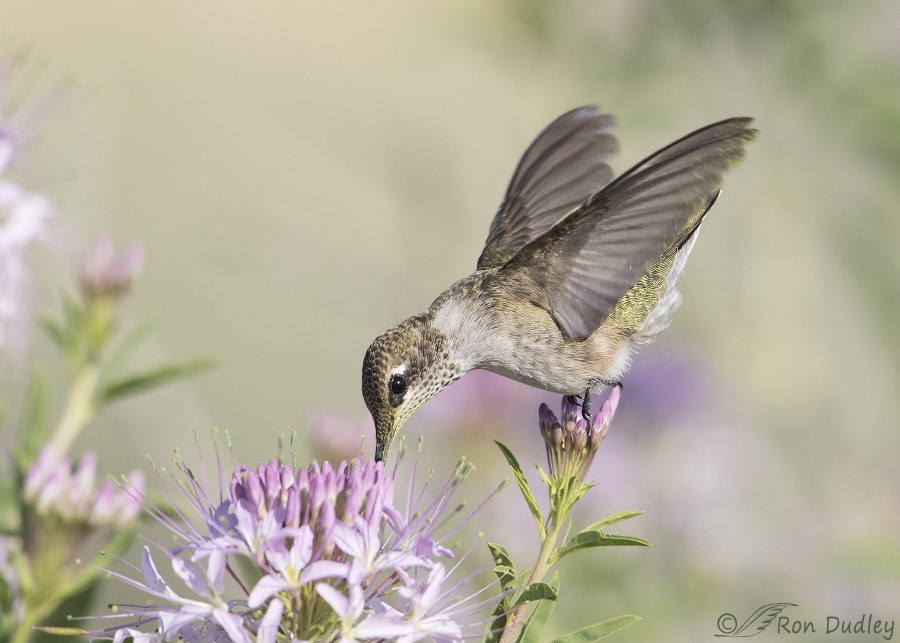
1/3200, f/6.3, ISO 800, Canon 7D Mark II, Canon EF 500mm f/4L IS II USM + EF 1.4 III Extender, not baited, set up or called in
This shot is a little more cluttered and the flower is somewhat soft but there’s something subtle going on here that tickles my fancy. This bird is in full flight but it almost looks like it’s perched on the unopened flower because of the position of the flower under the bird and the fact that the hummer has hooked one of its claws over the tip of one flower bud. I’m sure it was deliberate but I can only guess as to why – perhaps it’s because the flowers were swaying in a slight breeze and this was the bird’s way of stabilizing the flower and/or itself in the breeze.
Whatever the reason I’m always highly impressed by the delicate movements and incredible control of hummingbirds in flight.
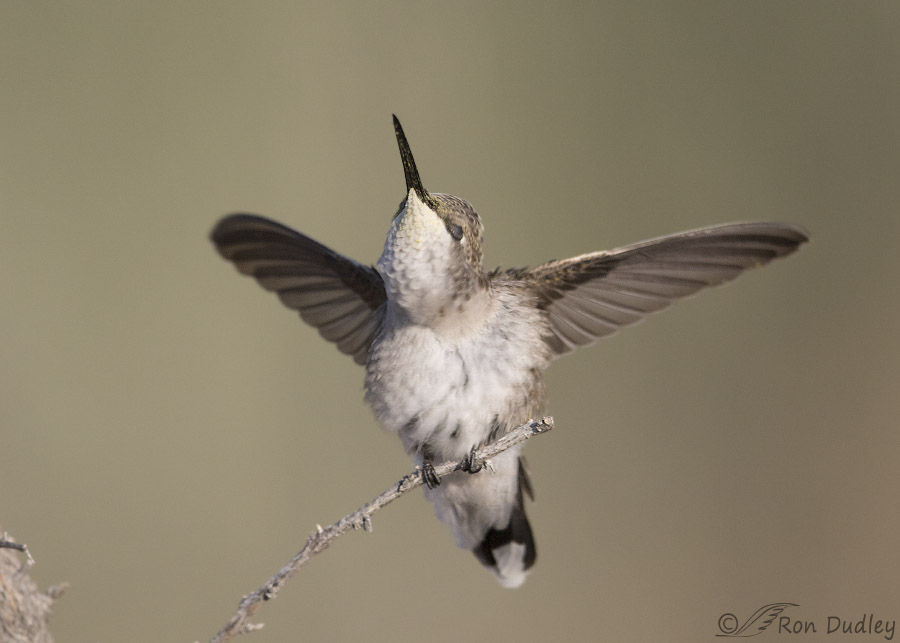
1/5000, f/5.6, ISO 800, Canon 7D Mark II, Canon EF 500mm f/4L IS II USM + EF 1.4 III Extender, not baited, set up or called in
One of the birds that morning even perched for me on a close twig and displayed a variety of interesting poses. This is a leisurely (for a hummingbird at least) wing and neck stretch. At f/5.6 and this focal length my depth of field was extremely shallow so the tail isn’t sharp but even so the bird sure looks like it’s enjoying the stretch – so much that it closed its eyes just like I do when I stretch in a similar way.
1/4000, f/5.6, ISO 800, Canon 7D Mark II, Canon EF 500mm f/4L IS II USM + EF 1.4 III Extender, not baited, set up or called in
I always enjoy catching hummers with their tongues out and the bird was considerate enough to give me a side view so both tongue and bill are sharp from tip to tip. That tongue is an amazingly efficient tool for harvesting nectar and we’ve recently learned more about how it works. It’s more complicated than I can go into here but if you’re interested check out this link.
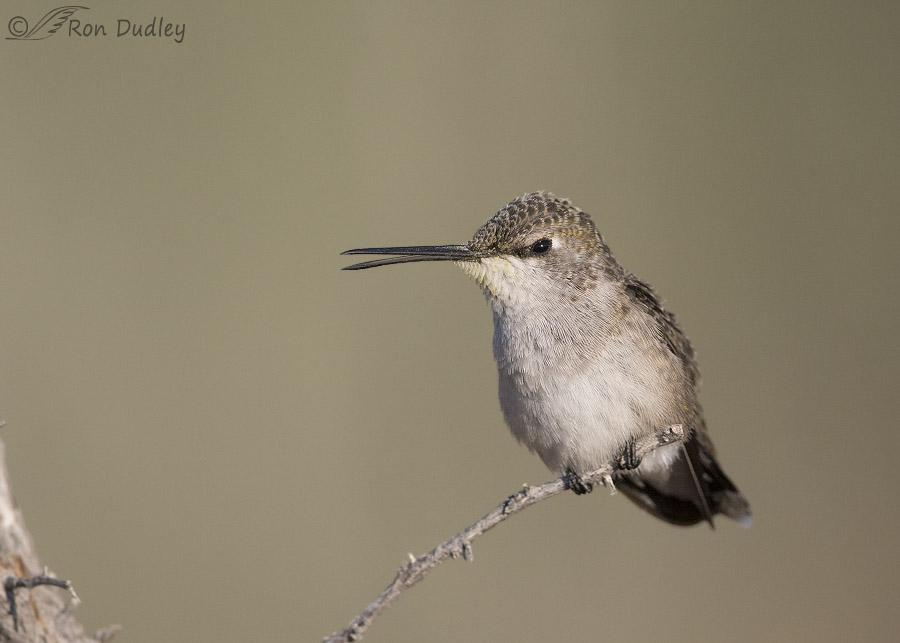
1/4000, f/5.6, ISO 800, Canon 7D Mark II, Canon EF 500mm f/4L IS II USM + EF 1.4 III Extender, not baited, set up or called in
Most folks think of a bird’s bill as being rigid and inflexible but that’s far from the case in many species. The hummer very briefly demonstrated rhynchokinesis – the ability of some birds to “bend” their bills. Usually (though not always) when this happens it’s so fast that I don’t even notice it until I’m reviewing my images at home, as was the case here.
Most of our hummingbirds are gone now so I thought I’d post a few more images of them while they’re still (barely) “in season”. It’s going to be a long winter without them.
Ron
Late addendum: If you’re interested in seeing a hummingbird with a tongue that’s about 2.5 times longer than its bill (and an explanation for it) check out this link from Wickersham’s Conscience.


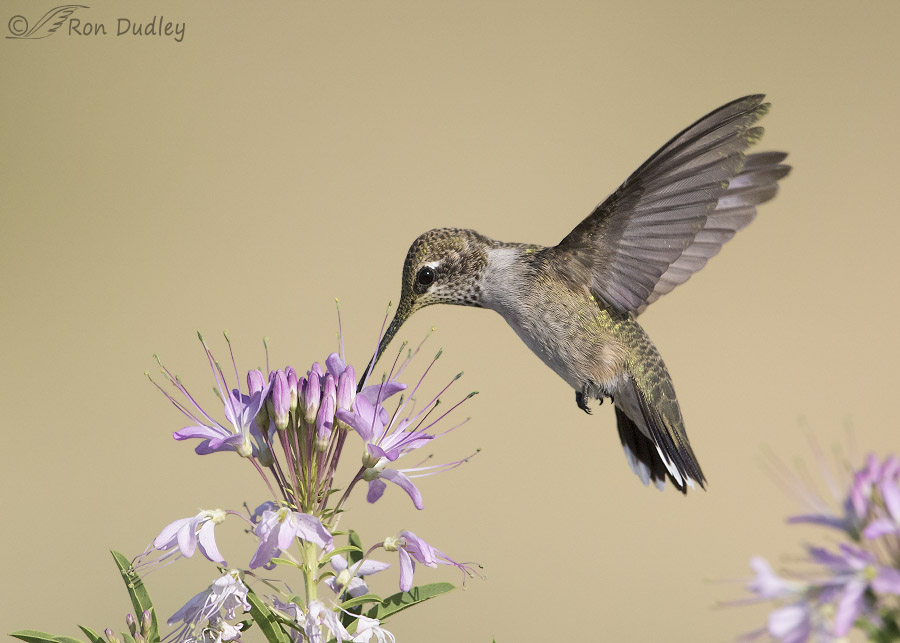
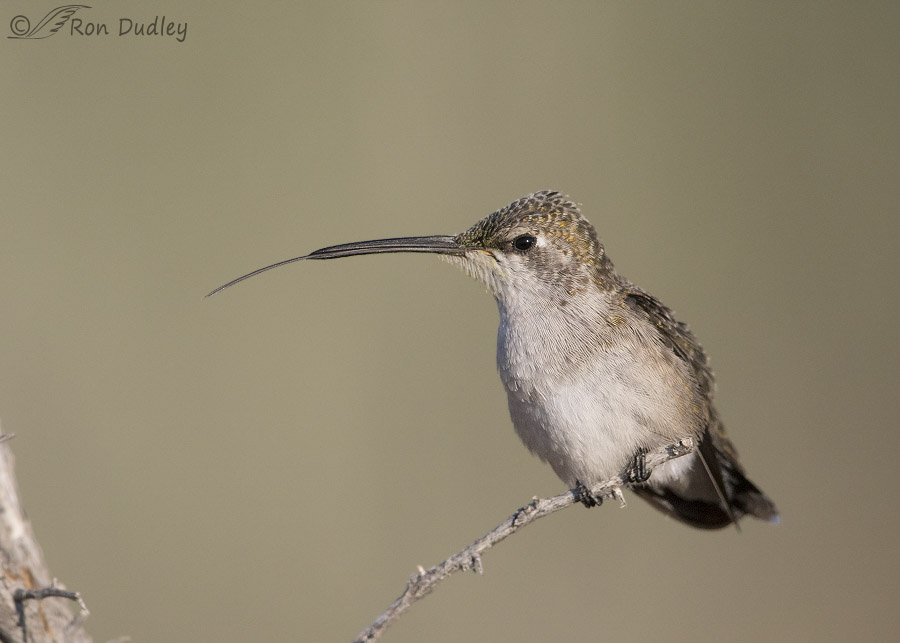
WOW! Hummers are so spectacular and this is a spectacular series. The stretch shot is magnificent. I can also see pollen on the tips of the primaries–pixie/fairy dust. The black-chinned hummer might not be as flamboyant as its ruby-throated cousin, HOWEVER, jewel-like beauty can also be subtle, making you look twice and pay attention!
Sorry to be late on this. Yesterday got away from me. I STARTED this post just after dawn, and then, life happened.
Extraordinary!
More nice pictures to view, I love what ever you post and the stories you come up with for each set. Keeps us on the edge sometimes! Thanks
Ha, believe me it keeps ME on the edge too, Trudy!
Wonderful series of a feisty little bird…a.lways interesting….
Thank you, Patty.
Since hummingbirds are my favorite bird, I applaud your efforts to capture so many poses as well as provide information on that little tongue!
We still have our hummingbird feeder up and I just saw a Black-chinned hummingbird drinking away. I always miss them when they leave and look forward to their return in the Spring.
Thank you, Ron.
I even saw a report a couple of days ago of a few hummers still left up in Saskatchewan, Alice. Surprised me.
The stretching hummer is enchanting. Hummingbirds have carved out an evolutionary niche all of their own – and are miracles of adaptation. The sort of miracle I can whole-heartedly believe in.
Thank you. So very much.
I’m glad you enjoyed them, EC. Thanks.
What a great group – Stunningly beautiful photographs of gorgeous birds! Thanks so much!
Thank you, Joanne.
Hummingbirds are great regardless whether you are looking at adults or immatures. Great images Ron, wish we could grow the Bee Plant here in the East, our Ruby-throats would go nuts. All I can do is fantasize about all the pictures I could take!! VBG!
Thanks, Dick. Fantasizing is the next best thing!
Dick, in my experience they seem to like Butterfly Bush (Buddleia). I had Ruby-throats as well as clear-wing hummingbird moths on mine.
Love Black-chinned Hummingbirds. They are our one year-round species. These photos are all wonderful. I’ve seen Hummingbirds rest, just sit around on twigs, but I’ve never seen one stretch. I’m surprised that your Hummers are just barely gone. At least in the east, they migrate mid-August.
Susan, some of our hummers started migration several weeks ago but there are always stragglers, especially since they include several species.
Ron: Thanks not just for the beautiful photos of a species we rarely see, but especially for the fascinating lesson on how hummers feed. Very enjoyable.
I thought that link was pretty interesting too, Richard. Thanks.
What is their winter migration path? Our ruby throats’ last fuel stop before flying over the Gulf is Rockport TX. There is a big hummingbird festival there during the migration. I worry about these little birds as there is no food source due to the hurricane.
Ann, most populations winter in Mexico so I suspect they take a fairly direct route from wherever they are during the breeding season.
Oh that stretch must feel wonderful! It’s my favorite, too!
Marvelous series Ron!
Charlotte
Thanks, Charlotte.
Beautiful photos. Hummingbirds amaze me, they are so small it is hard to think of them as birds. Most rehabbers seem to like raptors most. I think I like hummers. It is incredible to watch them grow from hatchlings to adults. They are feisty and independent.
It must really be something to rehab a hummer, April. I suspect many atypical techniques must be used for birds that are so very small and have such incredibly fast metabolisms.
More fantastic shots, Ron! I especially like the stretching — looks like it’s stretching its tongue and beak too. Those parts must get pretty tired as well, given the way they work. A fun way to start my day!
Marty, I almost didn’t post that stretching shot because we can’t see the eye. I’ve got to get over that “eye thing”, at least in situations like that…
So happy you did. It is my favorite.
That shot is proof that the “eyes” don’t always have it!
Beautiful photos Ron. Hummingbirds are a difficult subject to photograph. I see that your shutter speeds varied from shot to shot. Was wondering what mode you shot these in and if the varying shutter speeds were by design.
Zaphir, I always shoot in aperture priority so varying shutter speeds in these kinds of situations is a given. That’s one of the reasons I shoot at such high shutter speeds – so that if it drops unexpectedly I still (hopefully) have enough.
P.S. It’s raining! A “good” slow rain after last significant rain being in June sometime – YES!
Your rain is a big deal, Judy. I’m happy for you and I hope it at least slows down some of those damned fires up there. The fires in Glacier NP and Waterton just break my heart.
They don’t expect it to put them out but at least slow them down a bit. The grass comes back fast – the trees don’t
Yay for rain! Hopefully, it will aid the firefighting efforts.
Wonderful variety of poses you were able to capture! I love the stretch – surprised me tho don’t know why it should! With their speed and being in motion much of the time one doesn’t see/think about the other very bird like thing they do.
I love the stretch – surprised me tho don’t know why it should! With their speed and being in motion much of the time one doesn’t see/think about the other very bird like thing they do.
You’re right, Judy. They’re so darned fast with almost everything they do that our eye just can’t see (or at least notice) what’s happening. It takes a photo or slo-mo video to do that.